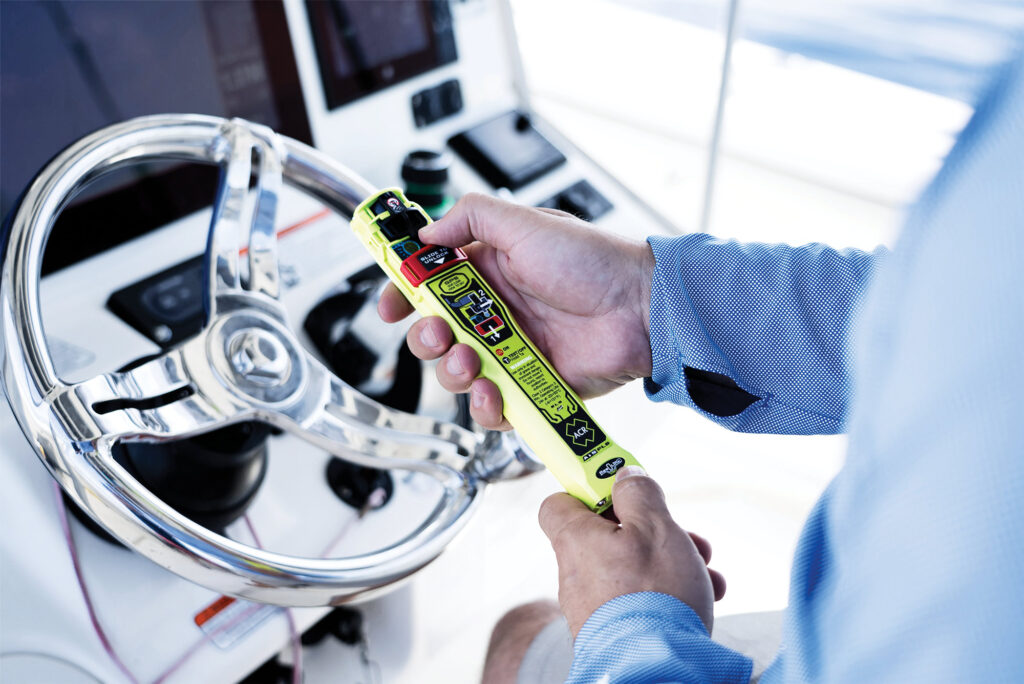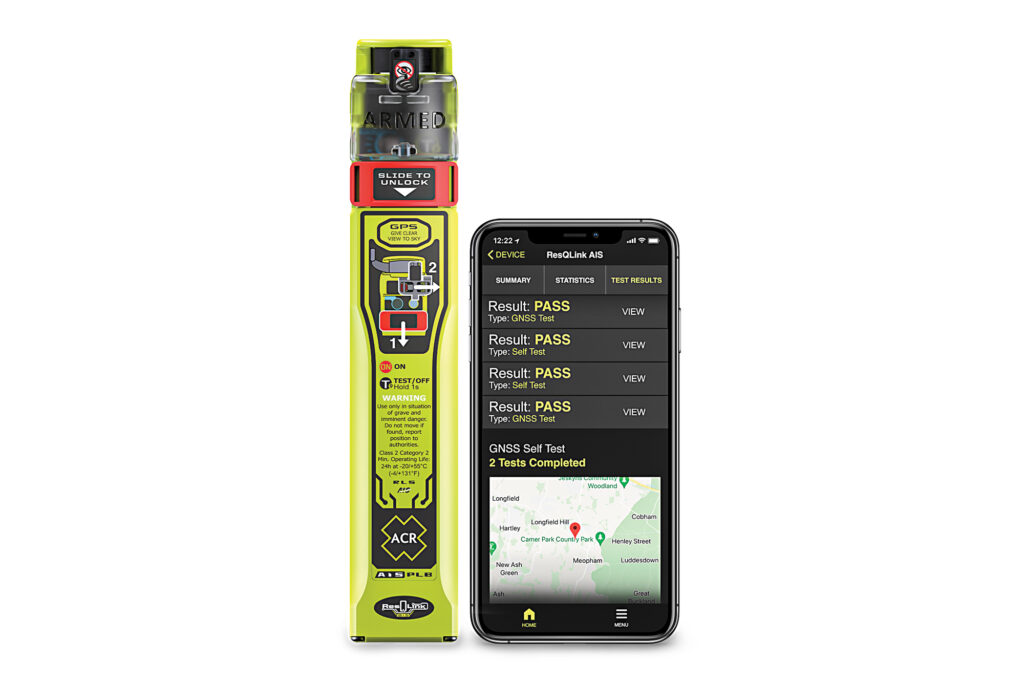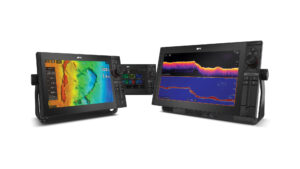
In June 2022, I helped some friends deliver a high-performance sailboat from Ketchikan, Alaska, to Seattle. Our crew was experienced, so we opted to sail west of Vancouver Island. Those waters are frigid, and the shorelines are desolate, so I carried two personal locator beacons.
The first PLB, an Ocean Signal MOB1, was rigged inside my Spinlock Deckvest 6D life jacket, ready to self-activate and transmit my position via the automatic identification system if the jacket inflated. The second PLB, a McMurdo FastFind 220, resided in a case on my jacket. If manually activated, it would transmit 406-megahertz satellite signals to the international Cospas-Sarsat program, for routing to search-and-rescue authorities.
Back then, this two-PLB setup was the gold standard, but it used only GPS (not the entire global navigation satellite system) to determine position information, and it provided zero reassurance that the signals had been received.
Now there’s a better option. ACR’s ResQLink AIS PLB-450 and Ocean Signal’s PLB3 are multifrequency beacons that operate on AIS and 406 MHz frequencies. The two brands have the same parent company, and the PLBs are identical, aside from their styling. They both can leverage the full GNSS to fix their location, which they broadcast. They can be paired with life jackets, and they come with built-in Return Link Service, which illuminates an LED once Cospas-Sarsat has received the signals. Also, both beacons employ near-field communication, which lets them share a wealth of battery and test-result information via ACR’s companion app.
The PLB-450 and PLB3 are, as of this writing, the world’s most sophisticated PLBs, but the technology to build multifrequency beacons has existed for years. Two things changed that allowed these devices to go live.

First, Return Link Service came online in January 2020. It’s provided by the European Union’s Galileo satellite network, and it lets mariners receive a simple LED-based confirmation that their distress signals have been received. The importance of this technology cannot be overstated; documented cases exist of lives lost to information voids.
Second, in February 2023, the US Federal Communications Commission authorized a single PLB that can transmit both AIS and 406 MHz frequencies. This is one of the most important marine-specific changes that the FCC has made in decades. It created a regulatory opportunity for manufacturers to build multisignal PLBs.
Prototypes had existed for at least a year before that FCC change, so ACR and Ocean Signal soon began shipping the new beacons. I was excited to receive a PLB-450 to review.
My first move was to register the beacon with the National Oceanic and Atmospheric Administration. This simple process involves inputting information, such as the PLB’s identification and serial numbers. Next, I downloaded ACR’s app, and I placed my iPhone next to the beacon. The devices connected, an iOS pop-up appeared, and I tapped it to launch the ACR app. I was presented with a wealth of PLB-specific data, including battery condition (high) and “total time on” (10 minutes).
ACR’s instructions make clear that it’s important to self-test the PLB, which also broadcasts on the 121.5 MHz frequency. Rescuing authorities sometimes use this frequency for final-mile recovery work. The catch is that commercial aircraft carry 121.5 MHz receivers, so it’s important to self-test any 121.5 MHz-enabled PLB only during the first five minutes of each hour.
I waited my turn, and then headed to the driveway, where I have a semiclear south-facing sky view. The first self-test, called a function test, involved pressing and holding a slider-protected key. The LED flashed blue once, indicating that the beacon had passed its exam. I confirmed this with the app.
Next came the GNSS Test. Here, I ran into some trouble, as the PLB flashes its results in red or green, and I suffer from red-green colorblindness. So, I reran the test with my wife standing next to me. She saw a single long red flash, followed by a number of shorter green flashes. Again, the beacon passed, and the app confirmed the results. It also showed me how many satellites were in view (three), how long it took to acquire its first fix (35 seconds), its fix type (2D fix) and its position accuracy (greater than 215 feet).
Like the MOB1, the PLB-450 (and PLB3) can be paired with a life jacket so that if the jacket inflates, the PLB activates. ACR and Ocean Signal achieve this via an activation slider, a safety cover and some ribbon that loops around the jacket’s air bladder. Should the jacket inflate, the ribbon pulls tight, the activation slider and safety cover pop off, and the beacon lights up. This autoinflation system is clever, but it must be carefully rigged (imagine packing a parachute). A seven-minute video on ACR’s website explains it.
I donned my life jacket in the driveway to see how it felt to wear the devices. There’s no escaping the fact that a PLB-450 is larger than a MOB1; however, I found this bulk was offset because I no longer had to carry the FastFind 220. Overall, a PLB-450 (or PLB3) is cost-competitive with a two-beacon setup, it weighs less, and it offers the same operational life of 24-plus hours.
There’s no question that I would have preferred to carry a PLB-450 or PLB3 on my delivery from Ketchikan to Seattle. The downsides are nonexistent, and it’s spectacular to be able to broadcast your emergency and position with great accuracy to both local traffic and rescuing authorities, and to receive Return Link Service confirmation.









